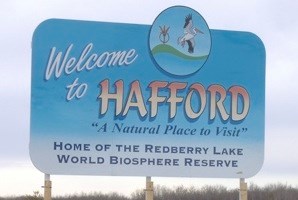There were 24 graduate students with business, social and environmental backgrounds participating in the ecosystem science and sustainability experiential trip at Redberry Lake Biosphere Reserve near Hafford.
Students were representative of international and national locations and found the experience a rewarding one.
Three instructors were Dr. Vladimir Kricsfalusy, Dr. Joe Schmutz and Dr. Christy Morrissey of the University of Saskatchewan's school of environment and sustainabilty.
"The EFT involved three intense days of research work, lectures, guest presentations and discussions with local people. This enabled students a hands-on experience in a variety of ecosystems, field research methods and sustainability issues," explained Dr. Kricsfalusy who continued by adding the intent was to have the students familiarize themselves with the biosphere concept, sustainability in agriculture, large and small farming operations and wildlife management.
Friday included the introduction to the ecosystems of the RLBR with John Kindrachuk, director of RLBR, and Andrew Hawrysh, RLBR board member, and Lenore Swystun of Prairie Wild Consulting.
Throughout the weekend, there were demonstrations in use of GPS/compass to map transects/sampling plots, vegetation sampling in both grasslands and forest areas, wildlife sampling including bird migration monitoring and banding, and water quality measurements. The techniques and skills learned in these sessions were directly applied in the field the remainder of the weekend by the students in a group setting.
Results of findings were presented as an in-group format Sunday.
In all four projects, three key tests were performed as follows: water salinity was tested and recorded at various locations at each test site, vegetative sampling and identification and invertebrate sampling were taken and recorded for future reference. The first study group topic was the impact of agriculture on wetland water quality and habitat characteristics; group two participants examined the extent of salinity intrusion on the water system and its effects on vegetation and invertebrate; group three examined and recorded the abundance of birds within four different habitat settings; and group four performed grassland range health assessment.
The group presentations provided an opportunity for students to reinforce what was observed throughout the field study as well as present their findings and address questions.
"Their presentations are based on first impressions and data collection," explained Dr. Kricsfalusy. "The final product will be a research paper and recommendations for management."




